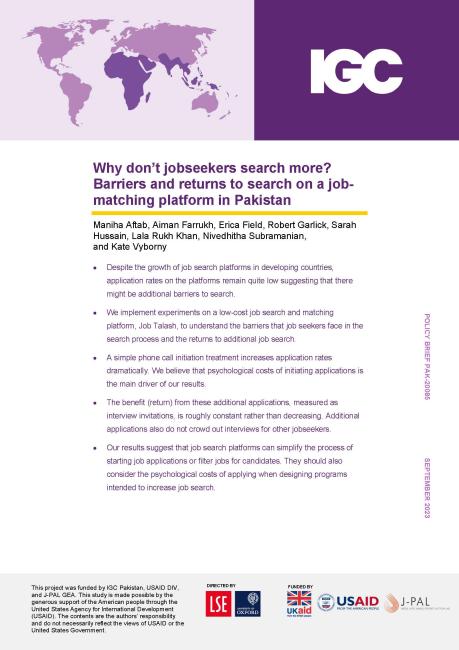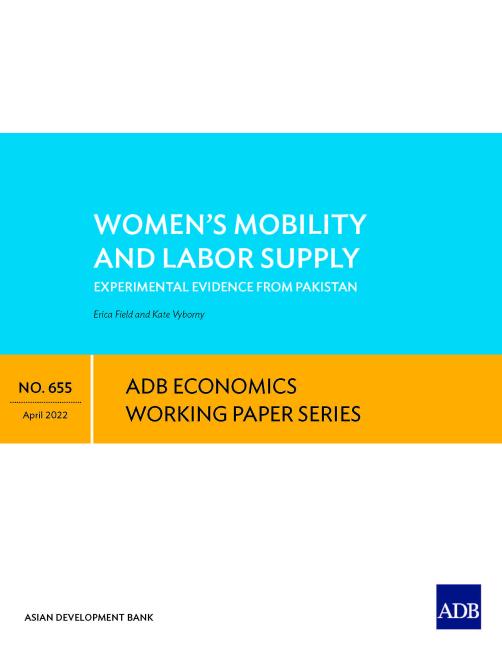Women's mobility, job search, and employment: Follow-up evidence from a randomised controlled trial
Our study explores how safe commuting transport impacts women’s decision to participate in the labour market.
Unemployment and economically inactive people are one of the biggest challenges facing urban labour markets in low-income countries. In South Asian cities, this pattern is more pronounced across gender lines with women less likely than men to participate in the labour market, even at relatively high levels of education. This project investigates the constraints on women’s labour force participation, including limited physical mobility due to stigma, harassment or violence on public transport.
Our study explores how safe commuting transport impacts women’s decision to participate in the labour market. We study a representative sample of male and female residents of Lahore, Pakistan, including the employed, unemployed, and economically inactive. We emphasise the importance of studying female residents, economically inactive "latent jobseekers," who represent the population with the largest potential benefit from reductions in labour market barriers. However, this population is particularly difficult to identify and study, precisely because they are inactive in the labour market, and they often lack independent access to sources of information such as telephones and internet.
To address this, we have successfully developed a research infrastructure, Job Talash, for both observing and delivering interventions with a population including both economically active and inactive female and male jobseekers and a large sample of firms.
With this infrastructure in place, we should be able to observe and measure the long term effects of increased job search induced by the transport offer on previously economically inactive female jobseekers and expand our understanding of the constraints that these jobseekers face.





